What Is Payroll Management In HR? A Complete Guide For Businesses
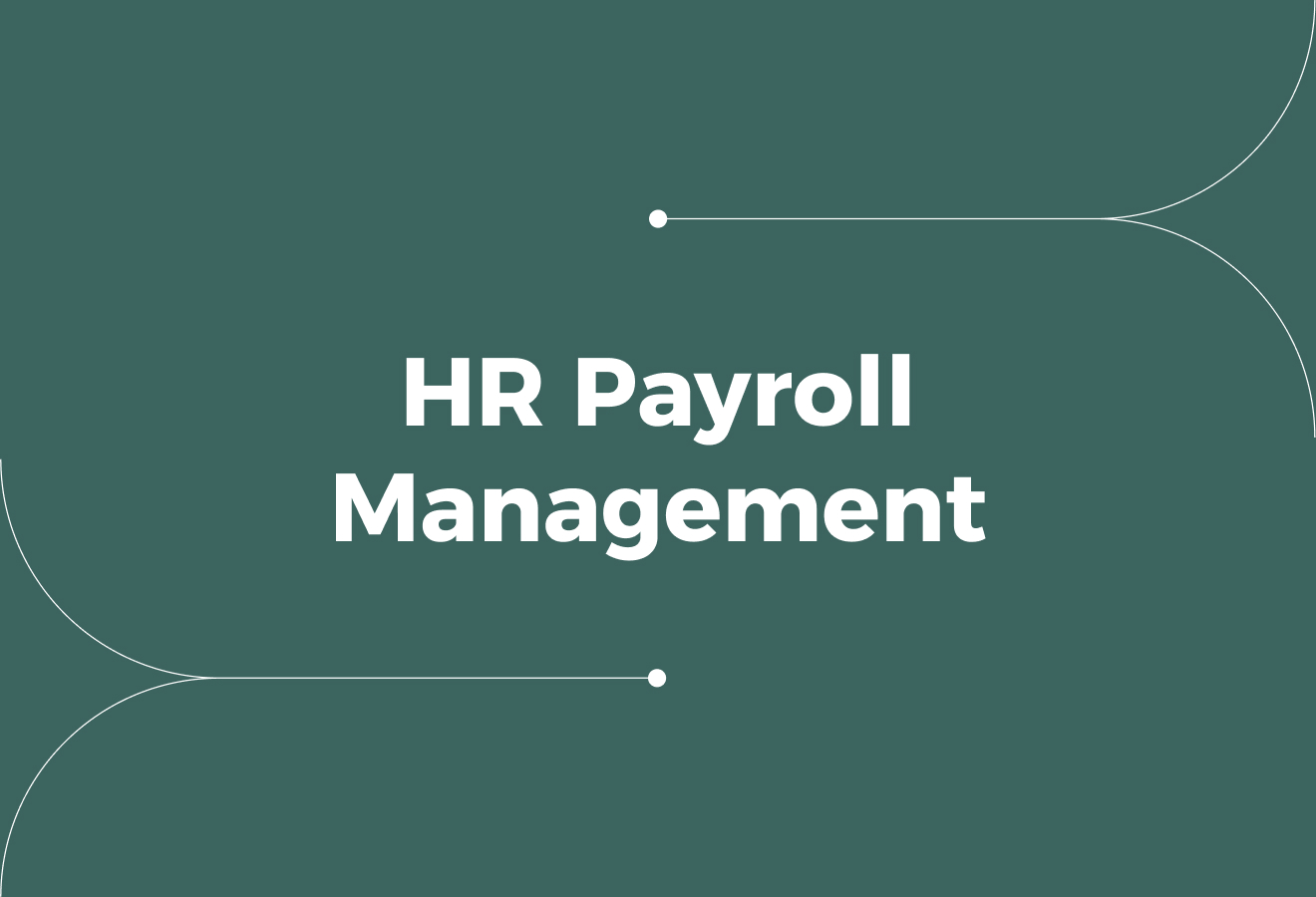
What Is Payroll Management In HR? A Complete Guide For Businesses
Imagine a month-end when timesheets pile up, tax rules change, and a single error can erode hours and trust. Automation of Payroll transforms that chaos into a streamlined process by handling pay calculations, tax filing, bank transfers, and integrating with time-tracking and benefits administration. Want to reduce errors and save time each month? This article explains payroll management in HR, covering payroll processing, compliance, payroll reporting, and practical steps to build a reliable payroll workflow you can run with confidence.
Cercli's global HR system combines payroll, HRIS, and reporting into a single, easy-to-use platform, enabling seamless payroll management while supporting your HR processes.
What Is Payroll Management in HR?
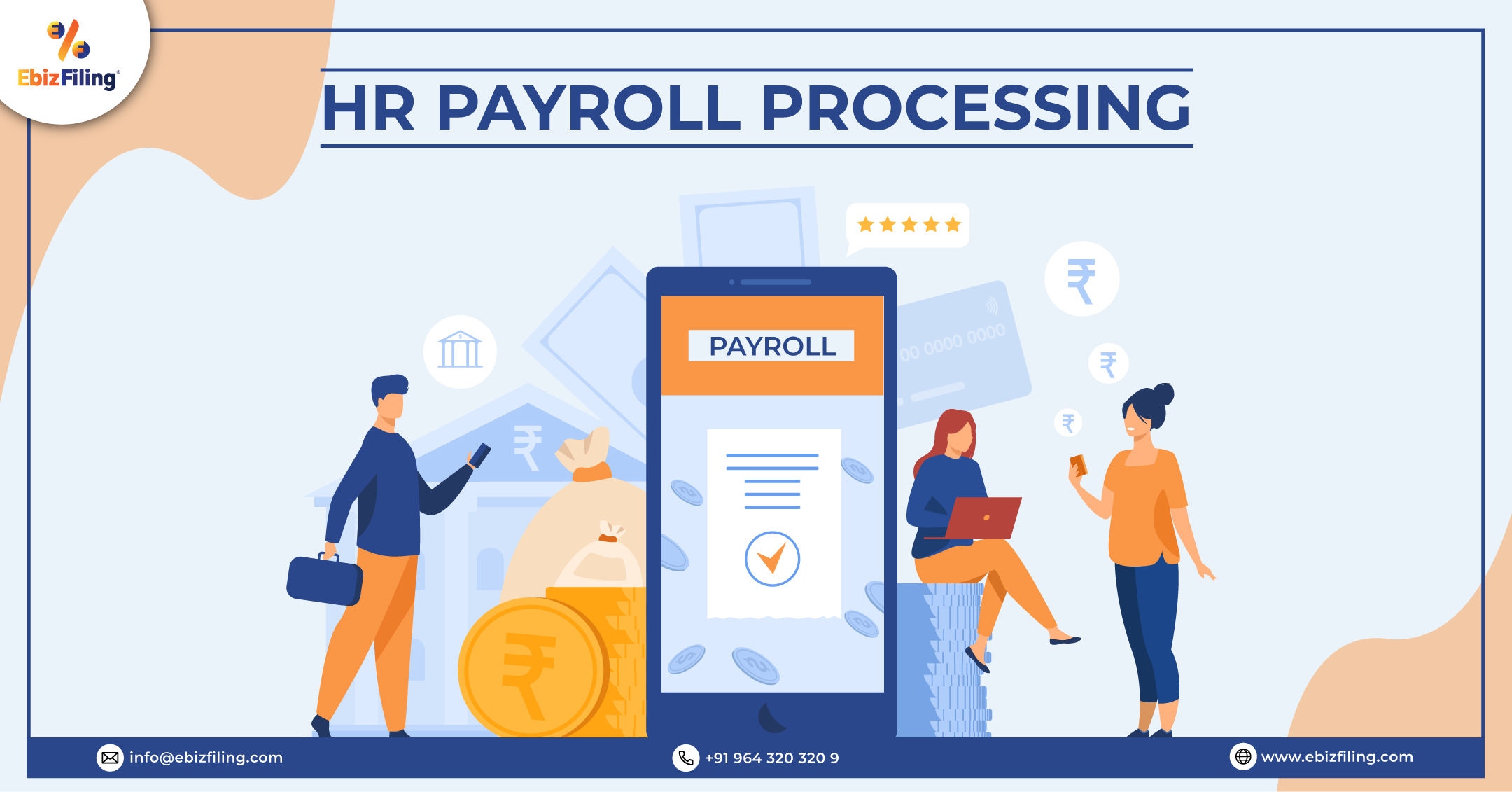
Payroll management is the set of processes HR uses to calculate, pay and record employee compensation.
It includes:
- Wage calculation
- Statutory deductions
- Payroll taxes
- Benefits administration
- Payslip delivery
HR staff handle payroll runs, manage the payroll calendar and keep employee records up to date. Identifying which part of payroll is most critical helps HR teams prioritise tasks effectively.
Payroll Lifecycle: From Hours to Net Pay
Start with time and attendance and move through:
- Gross pay
- Taxable earnings
- Deductions
- Net pay
Each payroll run follows a schedule and finishes with:
- Payslips
- Tax filings
- Bookkeeping entries
Payroll reconciliation and month-end reporting close the loop, creating an audit trail that ensures transparency and accountability. Assigning ownership at each stage ensures accountability and smooth operations.
Compliance and Tax: Staying Within the Law
Payroll must reflect:
- Current tax rules
- Minimum labour standards
- Statutory contributions
This includes:
- Correct tax codes
- Pension contributions
- Statutory leave pay
- Handling court orders
- Wage garnishments
Accurate payroll tax filings and regular audits reduce the risk of penalties and disputes. Regular monitoring of tax rule changes ensures ongoing compliance with tax regulations.
Record Keeping and Reporting: The Evidence You Need
Reasonable payroll control relies on accurate records:
- Contracts
- Timesheets
- Payslips
- Deduction schedules
Payroll reporting supports finance, budgeting, and regulatory returns. Reconciliation between payroll and the general ledger prevents drift and exposes errors early. Relevant reporting enables managers to make informed decisions.
In-House Payroll: Control of Resource Costs
Running payroll in-house gives direct control over data, schedules, and security settings.
It requires expertise in:
- Payroll law
- A robust payroll system and staff time for calculations
- Tax filings and reconciliations
Scalability can become challenging as headcount and complexity grow. Organisations should ensure that they have adequate processes and staffing to maintain accuracy under pressure.
Outsourcing Payroll: Specialist Service and Risk Transfer
Outsourcing involves transferring payroll processing, tax filing, and specific compliance tasks to a provider. This can free internal resources and reduce exposure to errors from staff turnover. Contract terms, data security, local compliance coverage, and service levels require careful review and consideration.
Organisations should determine which payroll tasks can be delegated to external parties.
Hybrid Payroll: Split Tasks to Match Capability
A hybrid model keeps core payroll control in-house while outsourcing specialised or international payroll. Local payroll administration can be retained internally, while a vendor can handle tax filings or complex cross-border payroll. Clear handoffs, consistent data formats, and defined integration points are essential.
Organisations should carefully decide which payroll activities to retain internally.
Automated Payroll: Reduce Manual Work and Risk
- Wage calculation
- Tax computation
- Recurring deductions
- Payslip distribution
Integration with HRIS and time and attendance systems eliminates duplicate data entry and streamlines payroll processing. Automated reconciliation, audit logs, and approval workflows enhance accuracy, providing transparency and traceability.
Identifying key integrations helps maximise efficiency gains in payroll processes.
Payroll Controls and Best Practice: Keep Errors Low
Segregation of duties, change controls for pay rates, access restrictions, and a documented payroll policy reduce fraud and errors. Regular payroll audits, test runs before go-live and reconciliation to the ledger catch issues early. Training HR and finance staff on standard error types and their resolution enhances confidence in payroll figures.
Key Components of Payroll Management\
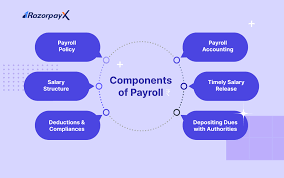
Employee Data Collection: What To Capture And Why It Matters
Start by recording:
- Full employee details
- Pay grades
- Contracts
- Bank information
- Tax identifiers
- Emergency contacts
Include time and attendance records, leave balances, benefits enrolments, and contractor status so gross pay and deductions calculate correctly.
It should be clear who updates this data and how often; assign ownership and schedule regular updates for:
- Pay
- Hours
- Benefits
Use a single source of truth for employee records to reduce manual entry and errors.
Salary Calculation: How Gross Becomes Net Pay
To produce gross pay, combine basic salary with:
- Allowances
- Overtime
- Shift premiums
- Bonuses and commission
To reach net pay, apply statutory deductions such as:
- Social security
- Pension contributions
- Employee insurance
- Tax withholding
Run payroll reconciliation to compare calculated totals with budgets and previous runs, and check for anomalies before authorising payments. Automate repetitive calculations to reduce errors and speed up payroll processing.
Compliance Management: Meeting Tax And Statutory Rules
Track payroll taxes, minimum wage requirements, and statutory contributions to stay compliant with employment law.
In the Middle East, organisations manage systems such as:
- The UAE’s Wage Protection System (WPS)
- GOSI in Saudi Arabia
- DEWS contributions were applicable
Maintain compliance:
- Calendar for filing deadlines
- Submit accurate returns to government portals
- Keep payroll audits on a regular schedule
Treat compliance as an ongoing control embedded in each pay cycle.
Payslip Generation Employees Can Trust
Payslips should clearly list gross earnings, individual deductions, employer contributions (where relevant), and the final net pay. Include pay period, year-to-date totals, tax codes, and any leave adjustments so staff can verify entitlements and raise questions quickly.
Offer digital access with role-based controls and archive payslips for statutory retention periods to support audits and queries.
Payment Disbursement: Ensuring Timely And Accurate Wage Payments
Coordinate payment runs with finance and banking partners to transfer salaries on the scheduled pay date. Support multicurrency payroll and payments to contractors as required, reconcile bank statements against payroll batches, and resolve failed transfers promptly.
To ensure payroll funds reach employee accounts, keep a checklist for:
- Approval
- Banking file formats
- Reconciliation steps
Record Keeping And Audit Trail: Staying Organised For Reviews And Reports
In a searchable system, store detailed payroll records including:
- Pay runs
- pay cyclesTax submissions
- Payment confirmations
- Reconciliation logs
Retain records for the legally required periods and protect personal data with access controls and encryption.
To efficiently answer regulatory questions, utilise payroll reporting for:
- Management dashboards
- Tax audits
- Internal reviews
Cercli: HR And Payroll Support Across MENA
Cercli helps companies in the UAE, Saudi Arabia, and across the MENA region simplify HR operations, remain compliant with local regulations, and manage payroll efficiently through a global HR system. It supports local, remote, and international teams, providing reliable tools for payroll, HRIS, and reporting.
Related Reading
- Why Outsource Payroll Processing Services
- Employee Payroll Management
- What Is the Payroll Tax Rate
- How Much Does Payroll Processing Cost
Why Payroll Management Matters for Businesses: Benefits of Accurate Pay
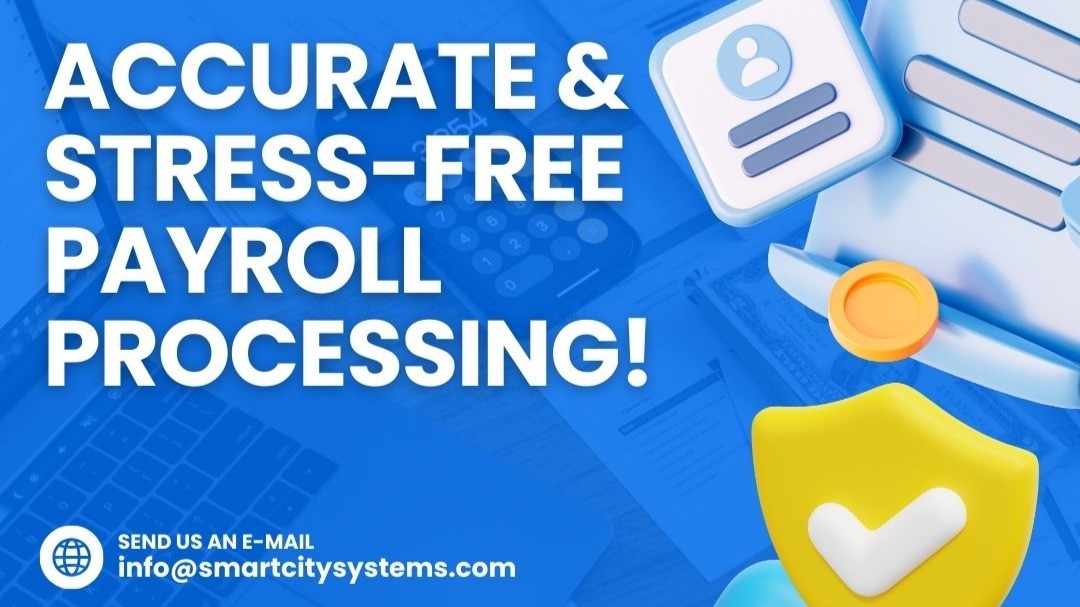
From timekeeping through payslips to tax filing, payroll management in HR covers:
- Payroll processing
- Administration
- Reporting
It combines:
- Wage calculation
- Deductions
- Tax withholding
- Benefits administration
- Bank transfers
- Payroll reconciliation
- Record keeping
Good payroll practices protect:
- Cash flow
- Support financial controls
- Reduce the risk of errors and audit issues
Effective payroll management supports both organisational efficiency and employee satisfaction.
Keeping Employees Motivated: Timely and Accurate Pay
Employees are central to business success. Their morale and engagement depend on:
- Reliable compensation
- Clear payslips
- Transparent attendance tracking
Accurate timekeeping for hourly workers ensures fair wage calculation and timely payment. According to research from Monster, turnover for hourly workers can be up to three times higher than for salaried employees.
Reducing Turnover Through Accurate Payroll and Reliable Timesheets
High turnover increases recruitment and training costs and disrupts operations, so accurate payroll and predictable pay-cycles directly support retention and productivity. Ensuring reliable timesheets and accurate payroll calculations supports both employee satisfaction and operational efficiency.
Keeping the Business Compliant: Taxes, Returns and Audit Trails
Payroll taxes and statutory reporting are subject to scrutiny from tax authorities. Errors or missed filings can trigger penalties or collection actions. A payroll system that maintains audit trails, stores payroll records, and automates tax withholding and filing reduces exposure to fines and protects working capital.
Proper payroll processes ensure documentation is available to meet tax authority requirements and audit obligations.
Keeping Good Books: Payroll as a Key Expense
For most organisations, payroll is the single most significant expense and shapes budgeting, cash flow and financial statements.
Accurate payroll feeds:
- Clean ledgers
- Supports reconciliation
- Ensures correct gross-to-net calculations
- Secures tax deductions
Effective payroll reporting allows finance teams to analyse labour costs, identify cost drivers and manage expenses efficiently, as well as prepare for external audits.
Related Reading
- How Does Payroll Processing Work
- AI in Payroll Processing
- Benefits of Payroll Outsourcing
- Payroll Automation Benefits
- Payroll Tax vs Income Tax
Challenges HR Faces in Payroll Management
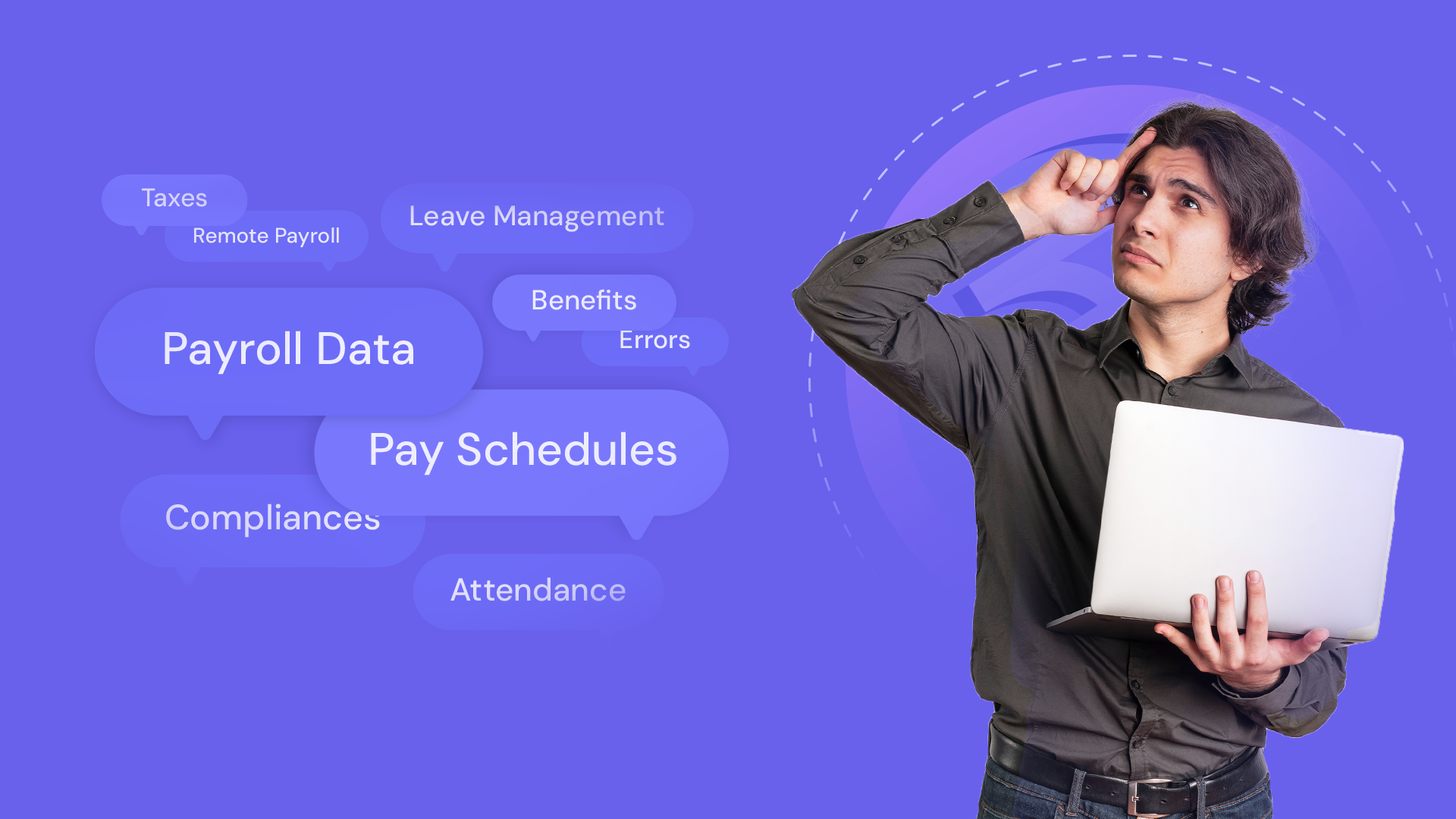
Managing Complex Tax Regulations
Tax regulations change frequently and differ by country, region and sometimes by city.
To ensure payroll compliance, HR must track:
- Payroll taxes
- Statutory contributions
- Tax exemptions
- Local filings
Errors in payroll tax calculations or missed filings can trigger fines, interest and legal inquiries, so teams need accurate payroll reporting and a reliable audit trail.
Pay Calculations: Ensuring Accuracy
Each employee’s pay run involves base salary, overtime, commissions, bonuses, deductions, and benefits, all of which affect the gross-to-net pay. When data is stored in separate systems, payroll processing requires manual reconciliation, which increases the risk of calculation errors and incorrect payslips.
Accurate payroll records, payroll cycle control and automated payroll calculations reduce rework and disputes about employee pay.
Managing Varied Employee Types
Full-time staff, part-time workers, contractors, interns, and consultants each carry:
- Distinct tax rules
- Payment schedules
- Benefits eligibility
Contractors may require different invoicing and withholding treatments, while employees may qualify for statutory contributions or collective bargaining arrangements. HR must maintain clear payroll administration rules for each worker type to prevent misclassification and compliance gaps.
Protecting Sensitive Payroll Data
Payroll holds bank details, national IDs, addresses and salary history, so data protection and secure payroll storage are essential. Poor access controls, weak passwords or unmanaged spreadsheets increase the risk of breaches.
Implementing role-based access, encryption, and regular audit logs helps protect payroll records and meets regulatory obligations for privacy and data security.
Payroll Across Borders and Time Zones
Remote teams and international hires bring:
- Additional payroll tax obligations
- Currency conversion
- Local labour rules
- Reporting requirements
Paying teams in different countries may require:
- Multi-currency payroll
- Local tax registrations
- Understanding of local leave and termination rules
HR must coordinate payroll compliance, contract terms, and payments for remote staff to avoid penalties and ensure timely salary payments.
Time-Tracking: Accuracy Matters
Accurate time and attendance feeds directly into payroll accuracy, particularly when overtime or shift premiums are applicable. Manual timesheets and spreadsheets often create errors when employees forget to log their hours or when managers fail to approve the time.
Integrating time and attendance with payroll processing reduces payroll errors, accelerates the payroll cycle and increases employee confidence in payslips.
Streamlining HR and Payroll Across the MENA Region
Cercli provides a global HR system that centralises onboarding, time and attendance, payroll processing, and compliance for teams in the UAE, Saudi Arabia, and across the MENA region. It supports local, remote, and international teams, providing reliable tools to manage payroll and HR processes efficiently.
How to Effectively Manage International Payroll
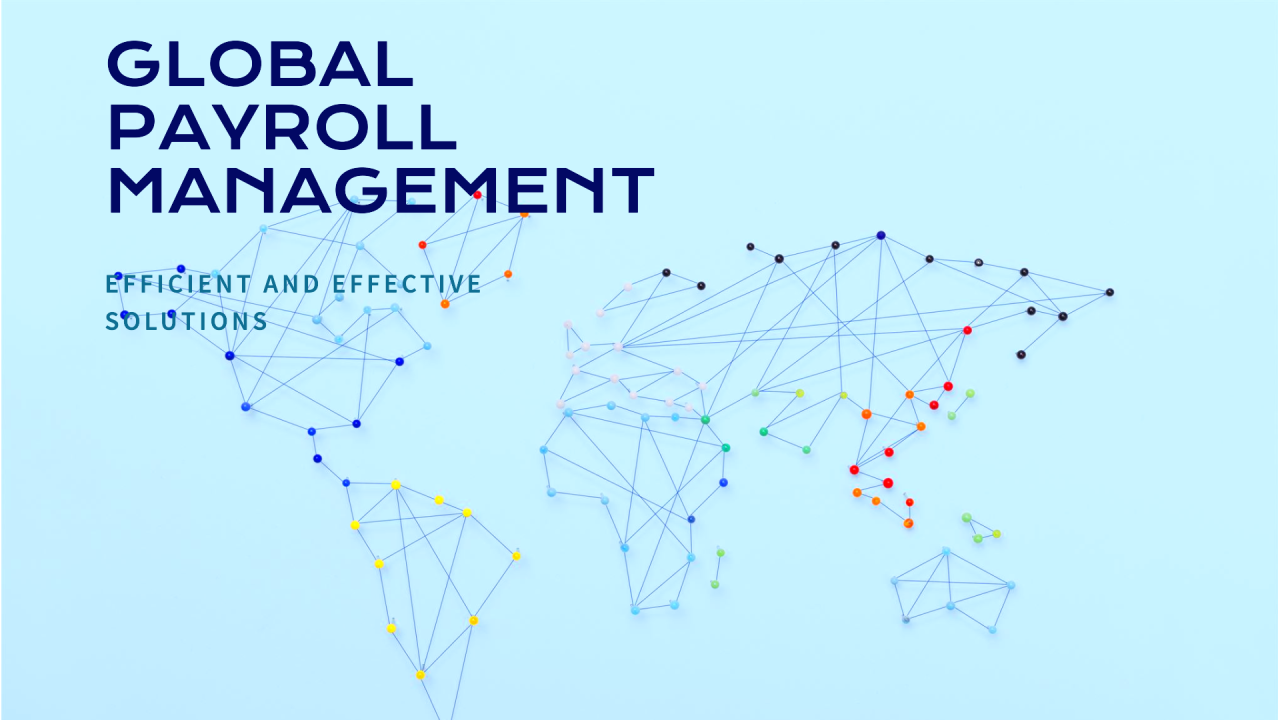
Managing International Payroll Effectively
Payroll management in HR covers the full payroll lifecycle, from gross-to-net calculation, statutory deductions and benefits administration to:
- Payslips
- Payroll reporting
- Audits
It includes:
- Payroll tax calculation
- Payroll reconciliation
- Record keeping
- Payroll governance
Payroll systems integrated with HRIS store employee master data, pay-cycle rules, and compensation details, while payroll administration ensures compliance with local employment and tax laws. A straightforward assignment of payroll governance is essential for ensuring compliance and accuracy.
Streamlining Multi-Country Payroll Operations
Consolidate payroll processing on a single global payroll platform to reduce administrative effort and improve accuracy. Centralised payroll operations support standard payroll data models while maintaining local compliance for:
- Taxes
- Social contributions
- Labour rules
Integrate payroll with HRIS, time and attendance, and benefits systems to eliminate duplicate data entry and create a single source of truth for employee records. Establish continuous monitoring for regulatory changes and, as required, work with global payroll specialists. Maintaining accurate employee master data across systems is crucial for compliance and efficiency.
Automation to Reduce Manual Work and Errors
AI-driven Human Capital Management systems and RPA can automate routine payroll tasks to improve accuracy and speed. Research indicates that by 2027, two-thirds of enterprises will use AI-enabled HCM capabilities to maximise workforce data potential.
RPA bots can handle payroll data processing, payslip distribution and expense claims, allowing payroll staff to focus on reconciliation, exception management and audit readiness. Built-in audit trails support payroll reporting and help reduce audit risk.
Optimising Currency Exchange and Payment Timing
Cross-border payroll requires careful attention to currency settlement and banking costs. Real-time payments reduce the need for large cash buffers and shorten settlement windows. Regularly benchmark and renegotiate global banking fees to avoid hidden charges that increase payroll costs.
Predictive analytics can model currency movements and schedule exchanges to obtain better rates, while cash flow hedge accounting helps manage currency volatility for recurring payroll obligations. Predictable cross-border pay runs support accurate cash flow planning.
Compliance Controls and Payroll Accuracy Checks
Design payroll controls that align with your risk profile and local statutory requirements. Implement automated gross-to-net checks, exception workflows and payroll reconciliation routines to detect miscalculations and irregular deductions. Maintain versioned payroll policies and local tax rules in the payroll system to support audit trails.
Use payroll reporting and analytics to:
- Monitor payroll costs
- Statutory liabilities
- Headcount-driven payroll changes
Reviewing payroll exceptions before payment ensures accuracy and compliance.
Outsource Options and Centre-Led Models
Decide whether to keep payroll in-house, outsource locally or adopt a centre-led model that combines central control with local execution. Outsourcing can provide immediate local compliance expertise, while a centre-led model can centralise:
- Payroll data
- Standardise processes
- Improve payroll reporting
Ensure service level agreements define data security, payroll accuracy targets and regulatory updates. Defining control and visibility requirements for payroll data supports governance and compliance.
Employee Experience and Self-Service
To reduce administrative enquiries and improve engagement, offer employee self-service for:
- Payslips
- Tax documents
- Payroll queries
Link payroll to compensation management and HR case management so pay changes, bonuses, and deductions flow directly through the payroll lifecycle.
Monitor employee feedback on payroll delivery to prioritise fixes and reduce repeated errors. Easy employee access to payroll records supports engagement and reduces administrative queries.
Related Reading
- Payroll Management Software Features
- How Is Payroll Tax Calculated
- Employee Payroll Automation Software
- Best Payroll Software for Small Businesses
- How to Do Payroll for a Small Business
Role of Payroll Software and HR Technology
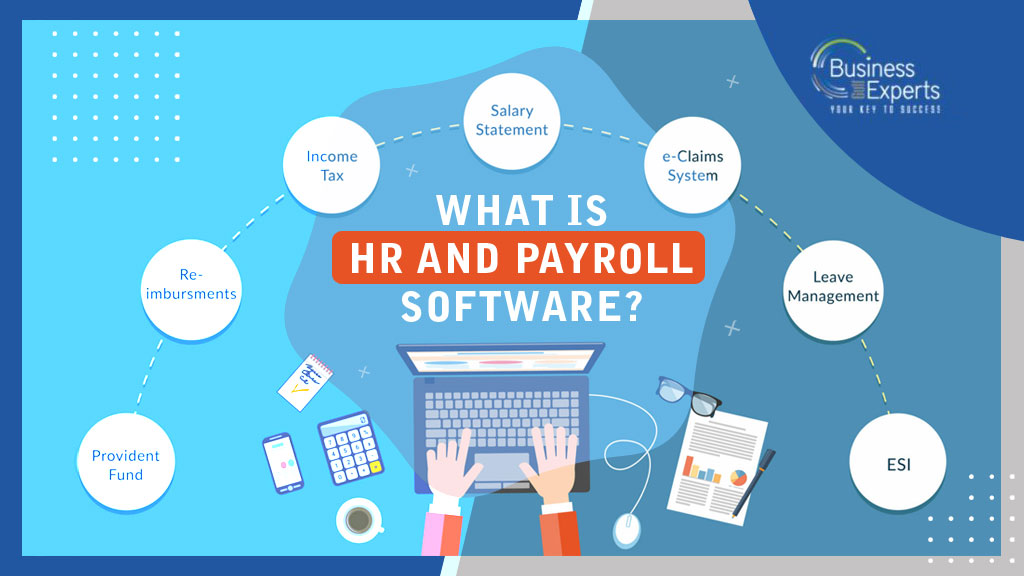
Payroll management in HR refers to the processes that convert employee data into accurate pay runs and regulatory filings.
It covers:
- Employee records
- Time and attendance
- Salary and benefits calculations
- Tax calculations
- Statutory deductions
- Payroll disbursement and reporting
A payroll system links HR master data with pay rules so that gross pay, net pay and employer costs are computed consistently across pay cycles. Organisations must ensure employee records are accurate and match payroll inputs.
How Payroll Software and HR Technology Improve Operations
Payroll software and HR technology automate repetitive tasks, reduce manual reconciliation and protect sensitive payroll data.
They provide:
- Controlled access
- Audit trails
- Secure storage for payroll and tax records
Integration with HR modules ensures that hire-to-pay workflows run smoothly, eliminating the need for manual data entry. For teams with remote or international employees, this also makes it easier to apply the correct local wage and tax rules for each individual. Prioritising processes for automation helps reduce manual workload and errors.
Enhancing Payroll Accuracy and Reducing Manual Risk
Manual data entry remains a common source of payroll errors. According to G2 research, nearly 40 per cent of payroll errors arise from manual data entry, and 24 per cent of employees indicated they might seek a new job after a single payroll mistake.
Automated payroll systems reduce this risk by:
- Syncing time and attendance with payroll
- Enforcing overtime and deduction rules
- Highlighting anomalies for review ahead of pay runs
Adequate controls flag exceptions before payroll runs, maintaining employee trust and reducing correction cycles.
Strengthening Compliance Across Multiple Jurisdictions
Payroll rules change frequently across countries and localities. Payroll software automatically applies updated tax codes and wage laws, maintaining secure audit trails to support audits and regulatory checks.
Systems also support pay transparency and controlled access to sensitive payroll data, reducing exposure to penalties and back-pay liabilities. For organisations that pay staff in multiple jurisdictions, this reduces the burden on in-house teams and lowers compliance risk.
Improving the Employee Experience with Self-Service Tools
Payroll self-service portals put payslips, leave balances and tax forms directly in employees’ hands. They enable staff to update bank details, view pay run history, and download required documents without needing to raise tickets with HR. This reduces routine enquiries and allows HR teams to focus on higher-value tasks.
Streamlining Onboarding and Ensuring Data Readiness
Automating payroll tasks during onboarding prevents first-pay delays and reduces early wage errors.
Workflows can:
- Automatically fill payroll forms
- Verify bank and tax information
- Sync payroll eligibility with start dates and system access
Efficient onboarding ensures new hires are added to the payroll correctly from day one, minimising manual corrections later.
Driving Operational Efficiency Through System Integration
Linking payroll to accounting systems, scheduling tools, and workforce planning brings payroll data into financial planning and headcount forecasting. General ledger connections reduce reconciliation work, and time and labour feeds avoid duplicate entry.
Real-time payroll reporting provides HR and finance with a unified view of compensation and headcount trends. Payroll data that feeds budgeting and workforce planning in real-time supports informed decision-making.
Request a Demonstration of Our Global HR System
Payroll management in HR is the system and set of processes that ensure employees are paid accurately and on time.
It covers:
- Payroll calculation
- Tax withholding
- Social contributions
- Benefits administration
- Payslip generation
- Statutory reporting
Payroll management also links to employee compensation planning, time and attendance, and payroll reporting so HR and finance share a single source of truth. Organisations measure payroll accuracy and timeliness using consistent checks and reporting.
The Payroll Process: Day-to-Day Operations
Payroll begins with data capture. Time and attendance, shift changes, leave records, overtime and expense claims feed into salary calculations. Next come gross pay, deductions for taxes and contributions, and adjustments for benefits or loans.
The system calculates net pay, generates payslips, posts entries to the accounting system, and creates audit trails for reconciliation and reporting purposes. Regular payroll cycles, off-cycle payments, and retroactive adjustments add complexity that an effective payroll process must handle efficiently.
Compliance: Local and Regional Rules
Compliance refers to the application of the correct rules for each market.
This includes:
- Payroll tax rates
- End-of-service payments
- Labour law entitlements
- Statutory reporting
- Record keeping
In the Middle East, employers must comply with UAE and Saudi regulations while adapting to regional variations across the MENA region.
Non-compliance leads to fines, audits and reputational risk, so systems must map local rules to automated calculations and filing schedules. Organisations should designate responsibility for tracking regulatory changes and updating payroll rules.
Payroll Software and Integration
Payroll automation removes repetitive tasks and reduces human error.
Systems securely perform:
- Calculations
- Validate inputs
- Process payments
- Store records securely
Integration with HR systems, time-tracking and accounting software eliminates duplicate data entry. APIs allow real-time data flow between hiring, payroll, benefits and bank payment systems.
Automation also creates audit logs and digital payslips, improving transparency for employees and auditors. Reducing manual work each cycle improves accuracy and frees HR teams to focus on higher-value tasks.
Managing Global Teams and Contractor Payments
Global payroll requires:
- Multi-currency handling
- Local payment methods
- Contractor payment workflows
For cross-border transfers, paying contractors across more than 150 countries requires:
- Correct tax treatment
- Classification checks
- Local compliance
Companies may use local entities, payroll providers or employer-of-record services. A unified platform that handles employees and contractors reduces administrative overhead and simplifies global payroll reporting. Tools must be scalable to support efficient expansion into new markets.
Beyond Paychecks: Leave, Onboarding and Asset Tracking
Payroll is at the centre of broader workforce operations. Onboarding brings new hires into payroll, benefits and bank file generation. Leave management affects accruals and absence pay. Asset tracking ties hardware and allowances to employee records for cost control.
Consolidating these processes into a single system ensures data accuracy and reduces reliance on spreadsheets or email.
Why Cercli Supports Companies Growing in MENA
Cercli provides a single platform for companies in the Middle East to manage their entire workforce locally or across more than 150 countries. Companies can run fully compliant payroll across the UAE, Saudi Arabia, and the wider MENA region, while managing leave, onboarding, asset tracking, and global contractor payments in multiple currencies.
Cercli combines local payroll expertise with global functionality, enabling HR teams to manage payroll and compliance within a single system. Book a demonstration to see payroll automation and compliance in action.










